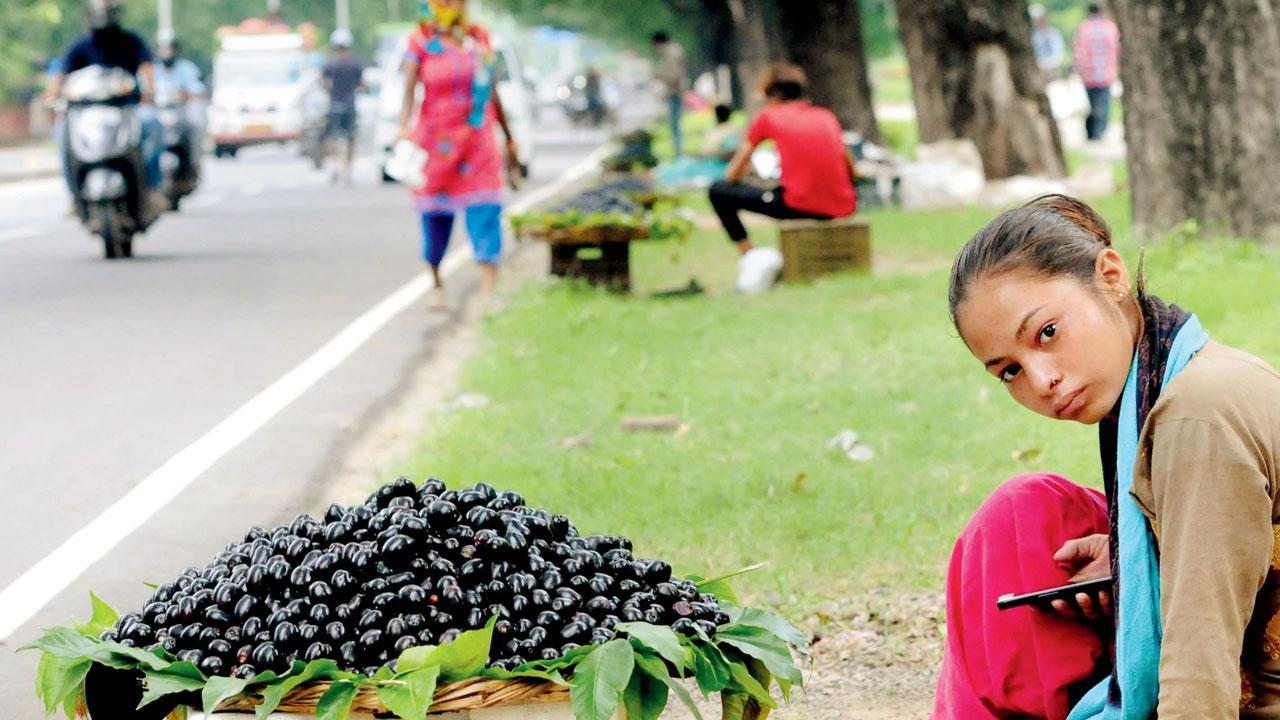Home / Sunday-mid-day / / Article /
The summer fruit you ignore
Updated On: 28 June, 2022 04:41 PM IST | Mumbai | Heena Khandelwal
As a proposal to seek a GI tag for the Badlapur jamun makes it to the news, here’s a look at why this ancient Indian summer fruit isn’t as popular as it should be
Listen to this article :

A street vendor sits with her pile of fresh jamun at a roadside stall in Chandigarh. Pic/Getty Images
Jamun, just like mango, is a summer fruit. Just not as popular.
Native to the Indian subcontinent, the sweet purple fleshy berry recently made it to the news when a young resident of Badlapur near Thane sought a geographical indication (GI) tag for the fruit, with the decision being seconded by the Thane collectorate.
Read Next Story



